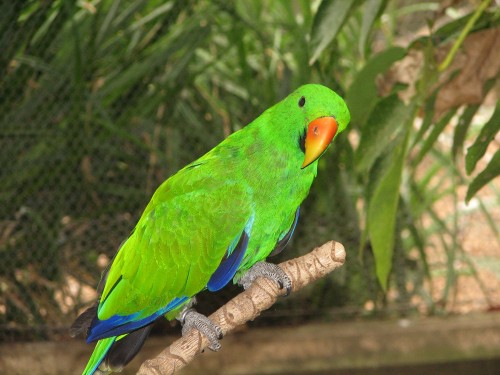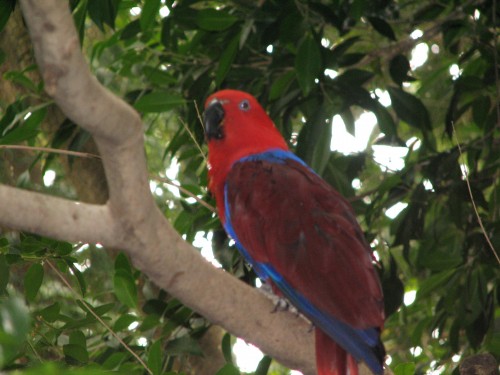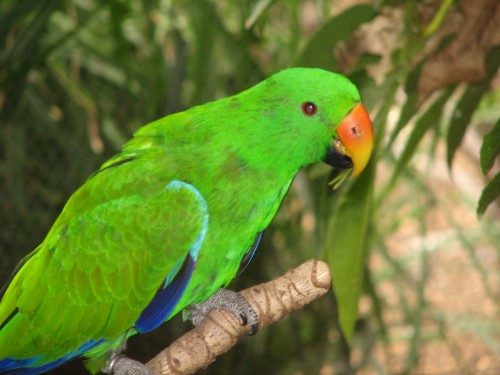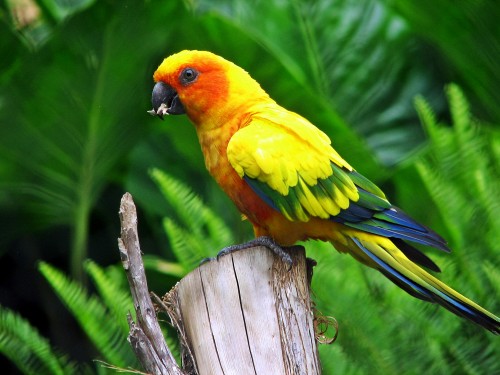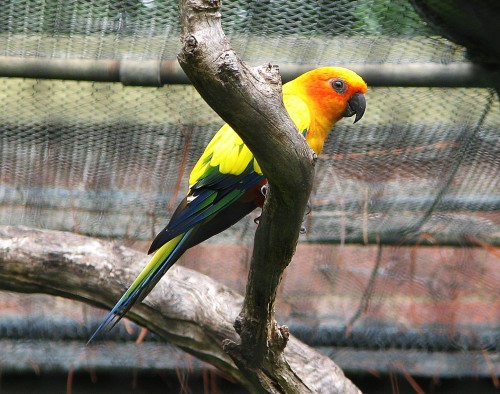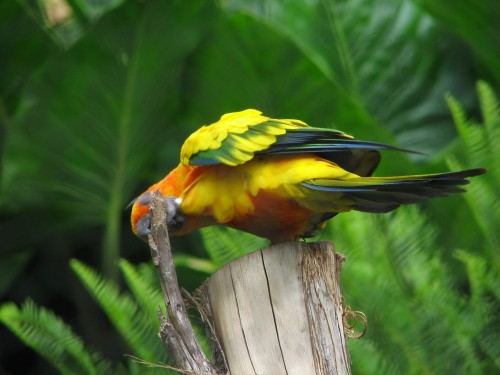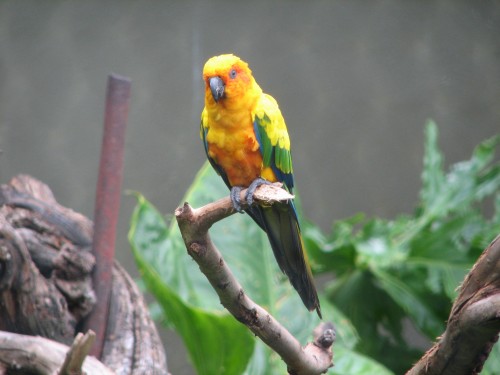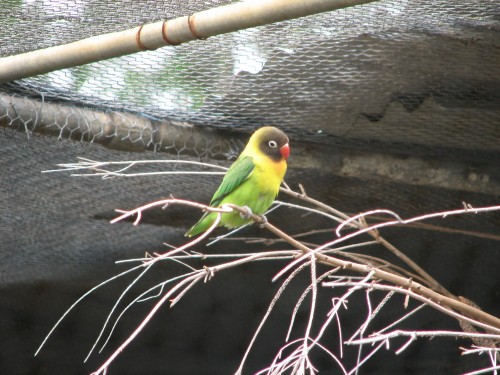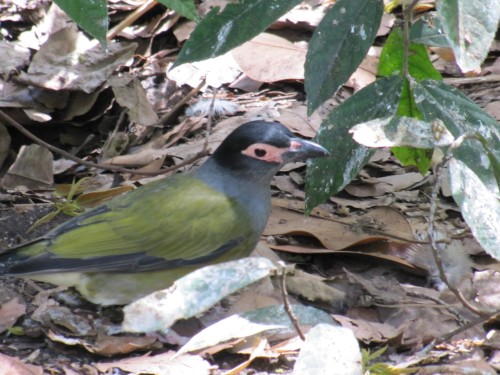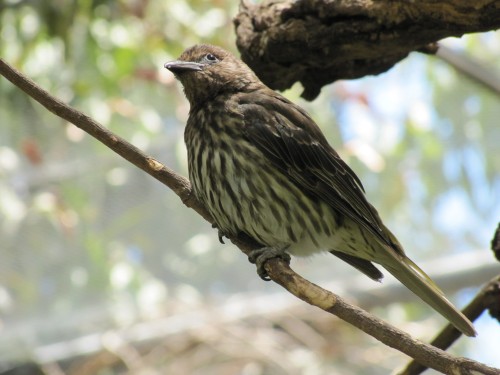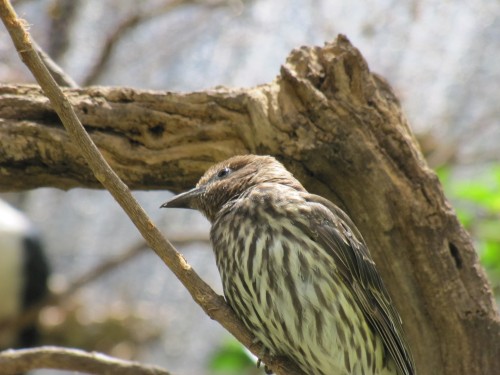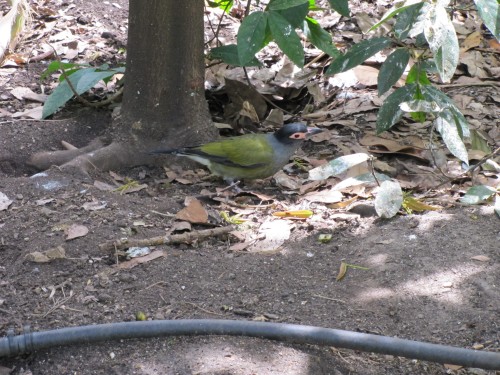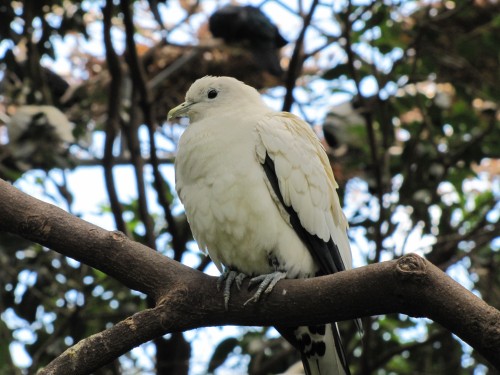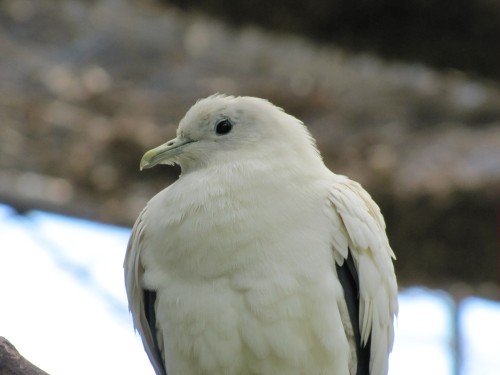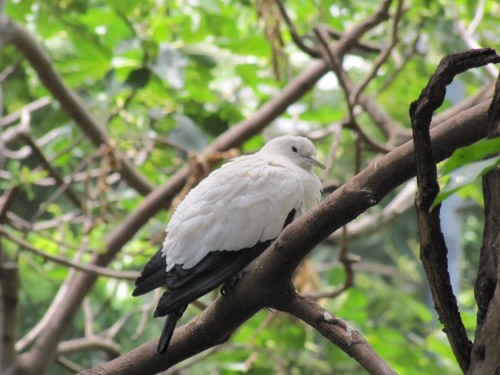Eclectus Parrot, Adelaide Zoo
In today’s post I feature several photos of the male and female Eclectus Parrots. This very colourful species of parrot is found in the northernmost parts of Queensland. It also inhabits eastern Indonesia, the Solomon Islands and Papua-New Guinea to the north of Australia.
These birds were photographed in a walk through aviary in the Adelaide Zoo, South Australia.
Sun Conure, Adelaide Zoo
Sun Conures (also called Sun Parakeet) are native to north-eastern South America. They are spectacular in their bright colours and it is not surprising that they are a popular aviary bird.
The birds shown in today’s photos are a part of the wonderful collection of birds in the Adelaide Zoo in South Australia. The zoo has a very strong collection of Australian birds with a small selection of non-Australian birds as well.
I am quite pleased with the photos shown today, taken as they were through the wire netting of the aviary.
You can read about another species of conure in the zoo, the Brown-throated Conure, by clicking here.
Yellow-collared Lovebird, Adelaide Zoo
The Adelaide Zoo has an excellent collection of Australian and exotic birds in their aviaries and I enjoy the challenge of photographing them, especially where I have to shoot through the wire netting. The photo of a Yellow-collared Lovebird above turned out quite well, despite the netting in the way. It is much easier in the walk-through aviaries of course.
The various species of lovebirds available through pet shops and those that specialise in just birds make them quite popular here in Australia. My opinion of lovebirds is somewhat unfavourable, I must admit. Many years ago our neighbours when we were living in another town had quite a number of lovebirds in a smallish cage right next to our fence. All I can remember is that they were constantly squabbling and screeching.
On a more positive note, I will acknowledge that they are beautiful birds. I can see the attraction of having them as pets, either in a cage or in a bigger aviary.
They are native to Tanzania in southern Africa.
I have written about this species on another occasion (click here).
Figbird, Adelaide Zoo
In Australia there are two races of Figbird. Shown in today’s photos is the Green Figbird I photographed in a walk through aviary in the Adelaide Zoo, South Australia. The Green Figbird is found along coastal Queensland and New South Wales. The other race – the Yellow Figbird – is a bird of northern Australia. Where the two races meet there is interbreeding.
The Figbird is found in rainforests, woodlands, orchards, gardens and parks, mangroves and along watercourses. As its name suggests, its main food is fruit.
Below I’ve shown several photos of the female present in the same aviary at the zoo.
Pied Imperial-pigeon, Adelaide Zoo
This elegantly beautiful bird is another species I have yet to see in its natural habitat. These photos of Pied Imperial-pigeons were taken earlier this year in a walk through aviary in the Adelaide Zoo, South Australia.
To see this species I would have drive for about five days. Its range is over 3000km (about 35 hours’ travelling time) away from my home in Murray Bridge, South Australia. It’s far quicker to drive for an hour so I can see it in the zoo, but this is far less interesting and rewarding than seeing it naturally.
This pigeon is found in far northern parts of Western Australia and the Northern Territory, as well as north eastern Queensland, all places I have yet to visit. Their range extends to the islands off the north coast of Australia as well as in Indonesia and Papua New Guinea. Some populations are migratory.
They are found in rainforests, eucalypt woodlands, coastal scrubs, mangroves and on islands. They are mainly fruit eaters.
You can learn more about them here and see more of my photos of this species here.
